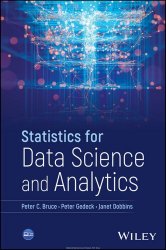 Название
Название: Mathematical Models Using Artificial Intelligence for Surveillance Systems
Автор: Padmesh Tripathi, Mritunjay Rai, Nitendra Kumar, Santosh Kumar
Издательство: Wiley-Scrivener
Год: 2024
Страниц: 350
Язык: английский
Формат: pdf (true), epub
Размер: 42.8 MB
This book gives comprehensive insights into the application of Artificial Intelligence (AI), Machine Learning, and Deep Learning in developing efficient and optimal surveillance systems for both indoor and outdoor environments, addressing the evolving security challenges in public and private spaces. Mathematical Models Using Artificial Intelligence for Surveillance Systems aims to collect and publish basic principles, algorithms, protocols, developing trends, and security challenges and their solutions for various indoor and outdoor surveillance applications using Artificial Intelligence (AI). The book addresses how AI technologies such as Machine Learning (ML), Deep Learning (DL), sensors, and other wireless devices could play a vital role in assisting various security agencies. Security and safety are the major concerns for public and private places in every country. Some places need indoor surveillance, some need outdoor surveillance, and, in some places, both are needed. The goal of this book is to provide an efficient and optimal surveillance system using AI, ML, and DL-based image processing. With the emergence of Artificial Intelligence, Machine Learning, and Deep Learning, surveillance systems have reached a standard. It made the surveillance system very powerful and effective in prevention. AI has become increasingly important in surveillance and security applications in recent years. AI is capable of processing and analyzing huge amounts of data in a fast and accurate manner, making it a treasured tool in detection and prevention. One of the most noteworthy benefits of AI-based surveillance systems is their capability to detect and track people and objects accurately. This tool can recognize faces, differentiate between objects and individuals, and identify unusual behavior. AI and ML algorithms can analyze video feeds in real-time, identifying patterns, anomalies, and key details that might go unnoticed by the human eye. They can enable advanced features like facial recognition, license plate recognition, and predictive analytics.


 Название: Pandas for Everyone: Python Data Analysis, Second Edition
Название: Pandas for Everyone: Python Data Analysis, Second Edition






